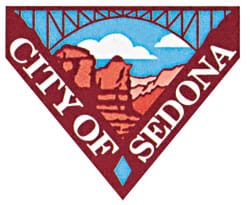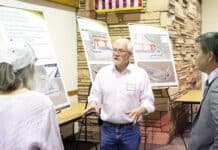In an effort to dispose of future wastewater discharge, the city of Sedona is hoping an underground fracture study will help determine if injection wells are feasible.
On Aug. 11, Sedona City Council voted 7-0 to add $71,209 to the cost of a study by Carollo Engineers to determine where Sedona can dispose of treated sewer water, also known as effluent. The extra money will go for controlled source audio-frequency magnetotellurics to identify underground fractures.
According to City Manager Tim Ernster, the city has money in the wastewater fund for the contract’s $71,209 amendment.
The fracture study will let the city know if it’ll be possible to dispose of effluent through injection wells and where, Director of Public Works Charles Mosley said. It will also allow the city to tell the Arizona Department of Environmental Quality where the injected water will flow.
On Feb. 24, council awarded Carollo a $139,879 contract to investigate options to dispose of future effluent loads at the city’s plant. The study looked at injection wells, spraying and wetlands, but is inconclusive without the fracture study, Mosley said.
Although ground water typically flows southwest toward the Verde River, it is unclear if underground fractures and caverns would divert the flow, possibly sending it to the pristine and highly protected Oak Creek.
The Arizona Department of Environmental Quality needs to hear from Carollo and the city, exactly where the water will flow, Mosley told council.
Even if the plant is upgraded to treat the wastewater to A+ quality, ADEQ will want to know where it’s going, especially if it could possibly end up in Oak Creek, which is designated an Outstanding Waterway.
“It doesn’t matter if it’s A+ or not, you have to know where the faults are and which direction they’re going so we know where the water’s going,” Anita MacFarlane, chair of the city’s Wastewater Effluent Disposal Land Use Task Force said. “This will also let us know possibilities of storing the water.”
According to Mosley, the study will introduce sound waves into the ground five miles away from devices placed shallowly underground.
The distortion of the travel pattern will help determine the geology of the area, including faults, voids, groundwater areas and caverns.
The CSMAT study will investigate faults near Dry Creek, the wastewater plant, the Page Springs fault and Sheepshead fault. The study was scheduled for the week of Aug. 17, if a wildfire in nearby Sycamore Canyon didn’t disturb the sound waves.
“As long as we have enough money in the budget, I think it’s worthwhile,” Vice Mayor John Bradshaw said.
Alison Ecklund can be reached at 282-7795, ext. 125, or e-mail aecklund@larsonnewspapers.coma






















